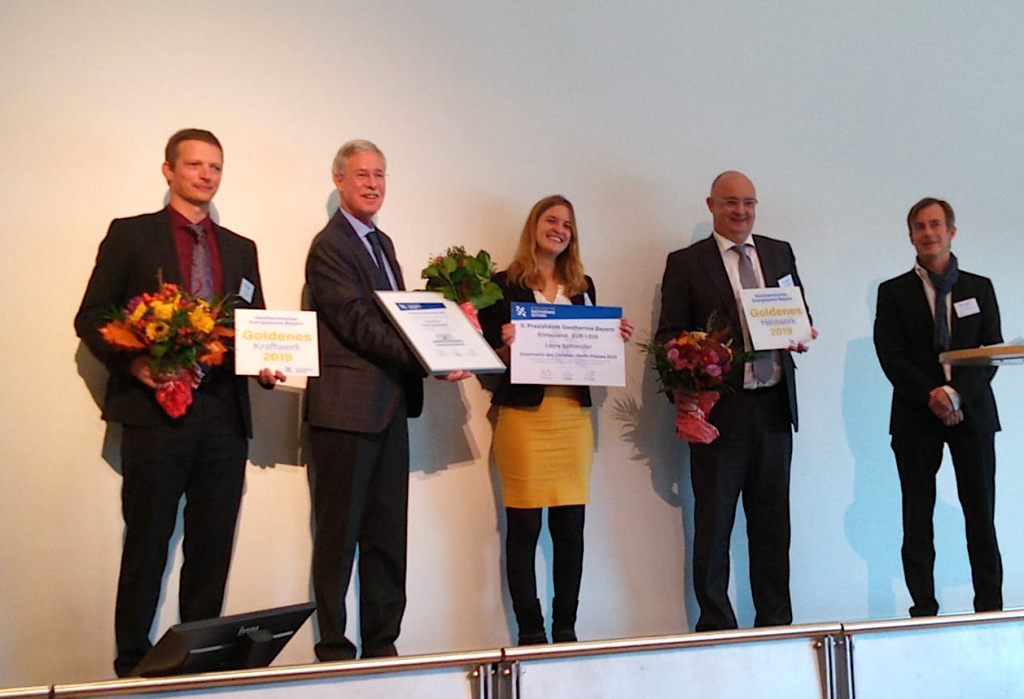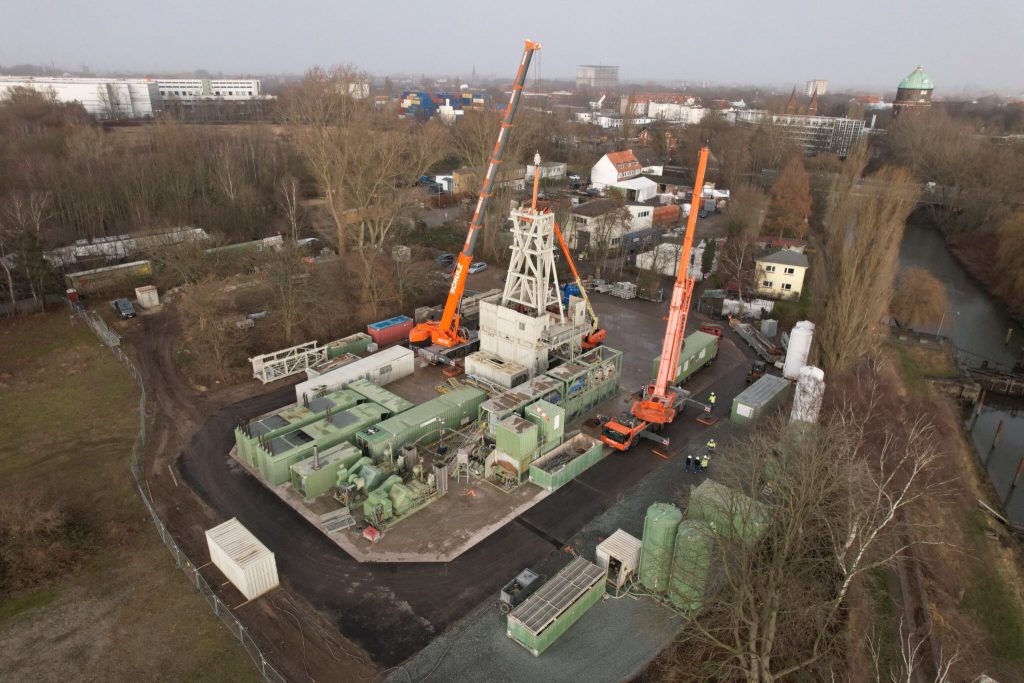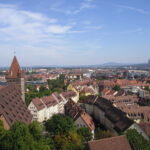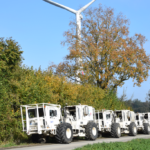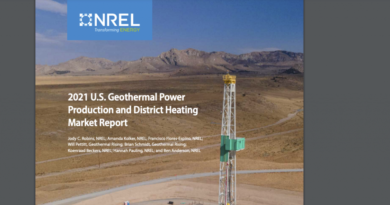Promising initial results of geothermal exploration drilling in Hamburg, Germany
Energy Disrupter
With initial test results from exploration drilling initiated in Hamburg, Germany, the developer reports promising results for medium-depth geothermal potential and deeper resources.
Three months after the start of drilling, the project team from Hamburg Energie Geothermie GmbH, a joint subsidiary of Hamburger Energiewerke and HAMBURG WASSER, reports initial informative findings from the exploratory drilling in Hamburg Wilhelmsburg in a release shared today. Drilling for the project started about three months ago as we reported. A layer of sandstone was already reached at a good 3,000 meters, which could potentially be used geothermally. As part of the accompanying research program mesoTherm, a rock sample almost 13 meters long, a so-called drill core, was taken today, which the geological experts are now examining in the laboratory. The analysis should provide information on how porous and permeable the sandstone is and whether this rock layer is therefore suitable for the planned deep geothermal energy. Only then are funding tests carried out, to determine parameters such as flow rate of the thermal waters and their temperature, which are crucial for the possible geothermal use. Drill core analysis and possible subsequent production testing will take a few weeks to complete. More details on the project can be found here.
In addition, the project team was able to identify another thick layer at a depth of around 1,300 meters that could contain thermal water and which is now to be checked. According to initial estimates, thermal water with a temperature of 50 to 60 degrees Celsius can be expected at this rock depth, which could be brought to a network-compatible flow temperature of 80 degrees Celsius using heat pumps. The project team is currently working on the technical requirements for the review and possible development of medium-deep geothermal energy.
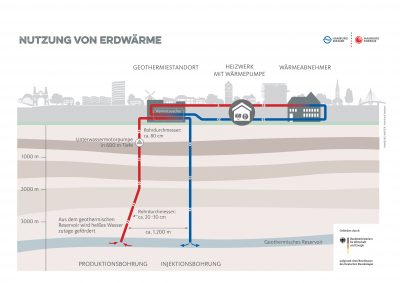
Michael Prinz, Managing Director of Hamburger Energiewerke: “We were able to successfully drill our first well over 3,000 meters vertically into the subsoil and thus also document the actual sequence of the rock layers directly in Hamburg for the first time. Very exciting is the realization that we have found a thick and water-bearing rock layer at a depth of around 1,300 meters, which we want to check for its potential for medium-deep geothermal energy. So, together with the analysis of the underlying rock layer, we are now pursuing two approaches to harness renewable geothermal energy from our exploratory drilling for the sustainable heat supply in Wilhelmsburg.”
Ingo Hannemann , spokesman for the management of HAMBURG WASSER: “I am pleased that the exploratory borehole was technically able to be sunk and that we now have a realistic picture of the conditions at this depth for the first time. We are now looking forward to the further investigations that will determine the geothermal potential.”
The scientific support program on the part of mesoTherm for the Hamburg deep drilling includes, among other things, the extraction of the drill cores, which are geoscientifically examined and provide information on the geothermal potential of the corresponding rock layer. The mesoTherm joint project is being carried out under the leadership of the Georg-August University of Göttingen, Geosciences Center, together with Geothermie Neubrandenburg GmbH (GTN) and the Leibniz Institute for Applied Geophysics (LIAG) as an associated partner and has the central goal of gaining knowledge about the geothermal reservoirs in northern Germany and their possible energetic use.
If the boreholes are successfully completed, the geothermal system is intended to pump geothermal heat to the surface in the form of hot thermal water. The energy is extracted from the water via heat exchangers and fed into the decentralized local heating network in Wilhelmsburg. The cooled water is then fed back into the thermal water-bearing layer underground. Be it for deep geothermal or medium-deep geothermal exploitation, two wells are required: a production well to extract the hot thermal water and an injection well to return it underground.
The system is part of the real laboratory IW3 – Integrated Heat Transition Wilhelmsburg, which aims to supply Wilhelmsburg residential areas with heat that is almost CO?-free. As a “real laboratory of the energy transition”, the Federal Ministry for Economic Affairs and Climate Protection (BMWK) is also funding the project with a total of around EUR 22.5 million. The living laboratories are part of the 7th energy research program with which the federal government supports research and development in the field of future-oriented energy technologies. They test innovative technologies and their interaction on an industrial scale and under real conditions. This can refer to a quarter or to an entire district, as envisaged in the IW3 project. The empirical values ??collected in the real laboratories are used to advance the conversion of the energy system in Germany.
Hamburg Energie Geothermie GmbH (HEGeo), Consulaqua mbH, HIR Hamburg Institut Research gGmbH, the Hamburg University of Applied Sciences (HAW) and Christian-Albrechts-University (CAU) are also involved in the Hamburg IW3 project as consortium leaders. involved in Kiel.
Source: Hamburg Energie
